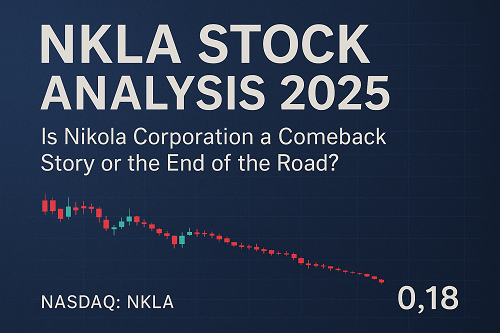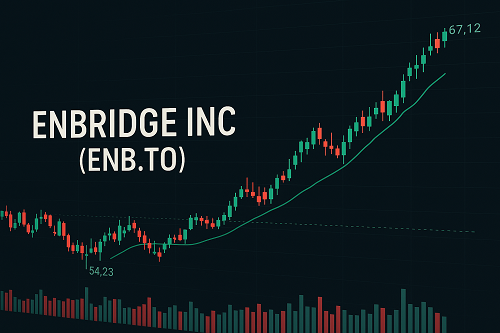The Rise and Fall of Nikola Corporation
Origins and Vision
Founded in 2014 by Trevor Milton, Nikola aimed to disrupt the heavy-duty trucking industry using zero-emission hydrogen fuel cell technology. Its mission resonated with investors hungry for the next big EV play, especially when it was listed under Nasdaq NKLA.
When Nikola went public in June 2020 via a special purpose acquisition company (SPAC) merger, the market went euphoric. Within days, the stock price rocketed from $10 to over $90 per share, briefly valuing the company at more than $30 billion—despite generating no revenue at the time.
The Scandal and Aftermath
The turning point came just months later when short-seller Hindenburg Research published a report accusing Nikola of exaggerating its technology capabilities. The now-infamous “rolling truck down a hill” video revealed that the prototype showcased in promotional materials wasn’t self-propelled.
Founder Trevor Milton resigned in disgrace, and in 2022, he was convicted of securities fraud. The damage to Nikola’s credibility was immense — investors fled, partnerships dissolved, and regulators scrutinized every statement the company made.
Nikola’s Product Line and Technology
Despite its challenges, Nikola managed to produce some tangible results before its collapse:
- Nikola Tre BEV (Battery Electric Vehicle): Designed for short-haul routes, it was assembled at the company’s plant in Coolidge, Arizona.
- Nikola Tre FCEV (Fuel Cell Electric Vehicle): Aimed at long-haul trucking, powered by hydrogen fuel cells for extended range.
- Hydrogen Infrastructure Division: Nikola planned to build a nationwide hydrogen refueling network — an ambitious and capital-intensive undertaking.
However, execution lagged far behind ambition. Production volumes were minimal, safety recalls plagued the trucks, and a lack of hydrogen infrastructure made adoption impractical.
By early 2025, the Tre BEV program was paused, and most of Nikola’s hydrogen refueling stations had yet to break ground.
Financial Overview: The Numbers Tell the Story
Revenue and Losses
Nikola’s financial statements leading into 2025 paint a grim picture:
| Fiscal Year | Revenue (USD) | Net Income (Loss) | Cash on Hand | Long-Term Debt |
|---|---|---|---|---|
| 2021 | $0.95M | -$690M | $497M | $18M |
| 2022 | $49.8M | -$784M | $233M | $152M |
| 2023 | $36.5M | -$648M | $121M | $325M |
| 2024 | $22.1M | -$550M | $68M | $452M |
By mid-2024, Nikola was burning over $40 million per quarter, with diminishing access to capital markets.
Share Dilution
The company repeatedly issued shares to stay afloat. Outstanding shares ballooned from 360 million in 2022 to over 900 million by 2024, crushing investor value. Each dilution round pushed NKLA further into penny stock territory.
The Bankruptcy Filing
In February 2025, Nikola officially filed for Chapter 11 protection. The filing cited “unsustainable debt levels and insufficient liquidity to maintain operations.” The stock was delisted from Nasdaq and now trades over the counter as NKLAQ, typically below $0.20 per share.
Key Catalysts Behind Nikola’s Collapse
1. Overpromising and Under-Delivering
Nikola’s early hype was built on prototypes and PowerPoint slides. When it came time to execute, the company consistently missed production targets and failed to scale.
2. Loss of Investor Confidence
Following the fraud scandal and ongoing recalls, institutional investors abandoned the company. Retail traders dominated the float, driving extreme volatility without providing sustainable capital support.
3. Costly Hydrogen Ambitions
Building a hydrogen ecosystem requires billions in infrastructure investment — far beyond Nikola’s reach without deep-pocketed partners. Government subsidies and private financing were insufficient.
4. Poor Cash Management
Excessive executive compensation, expensive facilities, and recurring recalls drained cash that could have funded R&D and production stability.
NKLA Stock Price Performance and Technical Analysis (2020–2025)
| Year | High | Low | Close | % Change YoY |
|---|---|---|---|---|
| 2020 | $93.99 | $10.00 | $16.96 | — |
| 2021 | $19.52 | $8.68 | $9.25 | -45% |
| 2022 | $11.45 | $2.11 | $2.36 | -74% |
| 2023 | $3.66 | $0.73 | $0.85 | -64% |
| 2024 | $1.12 | $0.17 | $0.21 | -75% |
| 2025 (YTD) | $0.28 | $0.16 | $0.18 | -14% |
The technical picture reveals a textbook long-term downtrend:
- 200-day moving average remains steeply negative.
- RSI hovers below 30, reflecting extreme bearish sentiment.
- Trading volume spikes on bankruptcy-related news — indicative of speculative short-term activity.
Technically, NKLAQ shows characteristics of a bankruptcy penny stock rather than a growth recovery candidate.
What Bankruptcy Means for NKLA Shareholders
When a company files for Chapter 11, common shareholders are at the bottom of the priority chain. Creditors, bondholders, and preferred shareholders must be repaid first.
In many cases, common shares are canceled outright, and new equity is issued to creditors in the restructured entity.
Unless Nikola’s restructuring yields an unexpected acquisition or new capital injection, existing NKLA shareholders may see their holdings reduced to zero.
Could Nikola Be Revived? Scenarios for 2025–2026
Bull Case: Acquisition or Asset Restructuring
A strategic buyer — perhaps an established OEM or hydrogen consortium — could acquire Nikola’s assets (patents, production facilities, or brand). This could yield some recovery value for equity holders.
Neutral Case: Shell Restructuring
Nikola might emerge as a small-scale hydrogen technology licensor or partner post-bankruptcy. However, equity recovery would still depend on how the restructuring plan allocates ownership.
Bear Case: Liquidation
The most probable scenario remains liquidation of assets, repayment to creditors, and complete equity wipeout.
Comparative Industry Outlook: EV and Hydrogen Trucks in 2025
Nikola’s downfall doesn’t mean the hydrogen truck thesis is dead. Companies like:
- Hyundai Motor (Fuel Cell Xcient)
- Toyota (H2 Mirai truck concept)
- Volvo and Daimler’s joint hydrogen venture
- Tesla Semi (battery-electric long haul)
…continue to advance heavy-duty zero-emission freight. The technology race continues, but capital efficiency and execution will determine winners.
Hydrogen remains promising for long-haul routes, but infrastructure gaps and costs hinder mass adoption. Battery-electric trucks have gained a head start due to existing charging networks and lower energy costs.
Trading and Investment Outlook for 2025
For Speculative Traders
- NKLAQ offers occasional “dead cat bounce” opportunities. Bankruptcy-related news spikes can trigger temporary price surges of 50–100%.
- Use tight stop-losses and position sizing discipline — this is a high-volatility, low-liquidity play.
For Long-Term Investors
- The risk/reward ratio remains unfavorable. Without a confirmed restructuring buyer or equity preservation clause, NKLA is not an investment-grade security.
- Investors seeking exposure to zero-emission trucking should consider companies with proven revenue, such as Tesla (TSLA) or Paccar (PCAR), which are entering the electric truck market from a position of strength.
Analyst and Market Sentiment
Before bankruptcy, consensus ratings on NKLA were already overwhelmingly “Underperform” or “Sell.”
| Source | Rating | Price Target (Pre-Bankruptcy) |
|---|---|---|
| Goldman Sachs | Sell | $0.50 |
| J.P. Morgan | Underweight | $0.75 |
| Cowen | Neutral | $1.20 |
| Wedbush | Sell | $0.25 |
Post-bankruptcy, no major analysts actively cover NKLAQ, and price targets are irrelevant until restructuring details emerge.
Retail sentiment on forums like Reddit and StockTwits remains speculative — focused on potential short squeezes or asset-sale rumors rather than fundamentals.
Key Risks and Takeaways
Core Risks
- Total loss of equity through bankruptcy liquidation
- Continued dilution or reverse splits
- Lack of buyer interest in hydrogen assets
- Market saturation in EV trucks
Upside Factors
- Hydrogen infrastructure subsidies could attract new strategic partnerships.
- Patent portfolio or manufacturing facilities could be acquired by larger automakers.
- Brand name recognition in the zero-emission trucking niche still carries some intangible value.
Verdict: Should You Buy NKLA Stock in 2025?
The Case Against
- Nikola has filed for Chapter 11, implying equity is effectively impaired.
- Management credibility has been eroded by years of missteps.
- The EV and hydrogen trucking market has evolved beyond Nikola’s reach.
The Only Case For
- Extreme speculation: a potential short-term trade, not a long-term investment.
- Traders looking for volatile, high-risk penny plays may find NKLAQ’s movements appealing — but the odds of recovery are extremely slim.
NKLA Stock Forecast 2025–2030 (Speculative Outlook)
| Year | Forecast Price Range | Notes |
|---|---|---|
| 2025 | $0.00–$0.50 | Bankruptcy overhang; minimal value |
| 2026 | $0.00–$1.00 | Possible restructuring outcome |
| 2027 | $0.00–$2.00 | Acquisition-only upside |
| 2030 | $0.00–$5.00 | Extremely speculative; depends on new ownership |
Unless Nikola successfully exits bankruptcy with new capital and credible management, long-term recovery is improbable.
Conclusion: A Lesson in Caution for Retail Investors
The story of Nikola (NKLA) will be studied in business schools for years — a case of hype-driven valuations, untested technology, and poor governance.
For 2025, NKLA is not an investment but a speculative asset. While a post-bankruptcy rebound can’t be ruled out, the base case remains near-total equity loss.
If you’re an investor seeking exposure to clean transport, consider diversified EV or renewable infrastructure ETFs, rather than betting on a bankrupt manufacturer.
Bottom line:
NKLA is a high-risk, low-reward penny stock. The hydrogen dream remains alive — but Nikola’s chapter in that story appears closed.





 XAUT-USD
XAUT-USD  AMD
AMD  MARA
MARA  SHOP
SHOP  BULL
BULL  CL=F
CL=F